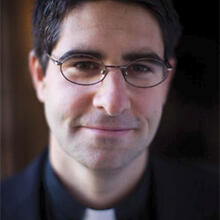Peter's Principles
Michael Cunningham delights in writing about New York City. His Pulitzer-prize winning novel, The Hours (1998), culminates in New York, just south of Washington Square Park at the bottom of a dark and foul airshaft between two apartment buildings. His last novel, Specimen Days (2005), is comprised of three novellas set in New York of the past, present and future. Though he identifies Virginia Woolf and Walt Whitman as muses for these two novels and incorporates their lives and their writing in his narratives, Woolf in The Hours and Whitman in Specimen Days, New York City is Cunningham’s most persistent muse and influential character. Once again, New York City, its neighborhoods and its values, inspire and shape Cunningham’s new novel, By Nightfall.
The book tells the story of Peter Harris, a 44-year-old art dealer with a beautiful wife and a disappointingly plain daughter. It catalogues the events of six days in Peter’s life when his wife’s brother, nearly 20 years younger, comes to crash at Peter’s apartment. Over the course of the narrative, every interaction, every flashback, every character and event emerges through the single point perspective of Peter Harris, that is, through the vanity, ambition and fear of a semi-successful New York gallery owner. Peter’s world, even his reflections on his wife, Rebecca, and daughter, Bea, are as distorted as Saul Steinberg’s 1976 New Yorker cover that depicts the world as seen from Ninth Avenue in Manhattan looking westward.
Peter looks upon everything as an object, even his most intimate friends and family. But some objects, like great works of art, affect Peter deeply. The sight of an old friend with breast cancer examining the gaping maw of a dead shark suspended in a tank of aqua formaldehyde at the Metropolitan Museum of Art initiates in him a visceral feeling of mortality. It is this encounter with Damien Hirst’s “The Physical Impossibility of Death in the Mind of Someone Living,” coupled with the reality of his friend’s illness, that begins to provoke in Peter a consideration of his own mortality.
Moments before this scene, Peter had lingered at Rodin’s “The Bronze Age” and marveled at its substantial, enduring beauty. In contrast to the shark, which will both lose its profundity once it is removed from the Met and eventually rot, the bronze, by virtue of its subject and the medium of its construction, will persist in its beauty.
The next five days of Peter’s life will describe Peter’s struggle to possess such perpetual youth and beauty for himself. He will risk the forfeiture of every object and relationship he has held dear to grasp one thing, one manifestation of beauty because such an object, he thinks, will radiate youth and beauty and life unto him.
Peter’s intuitions about mortality and the interactions he has with the objects of his life reduce his emotions to those of arousal and fear. Every cab driver, waiter, waitress, employee and artist he comes across is briefly considered, quickly dissected and dismissed as some inferior object doomed to failure or mediocrity. The only objects that merit further consideration are Peter’s wife, Rebecca Harris, and her younger brother, Ethan, the mistake (the child was born to elderly parents who had tried to prevent any further births). Both are classically beautiful in the way that Rodin’s “The Bronze Age” is beautiful. Both assert confidence and grandeur, yet now one is youthful while the other is aging and becoming more distant. Peter is at once fearful of his own solitude as an aging husband and father and aroused by the proximate intensity of Ethan’s recklessness, youth and beauty. Unfortunately, arousal and fear are the only emotions that Cunningham offers his readers, the only emotions apparent in this entire novel aside from the despair and insomnia of nightfall.
The language of this novel seems, at times, to be inspired by Time Out New York or New York Magazine. It is triumphant and bitter and, beneath its cynical sheen, quite vapid. A car is “Toyota-ish”; a hostess is “smart and noisy and defiantly vulgar”; a particular outfit can be “defiantly downtown”; to vomit in a cab would be a disgrace, for “You can’t be sick in public, not in New York. It renders you impoverished, no matter how well you’re dressed.” There are detailed walks through downtown Manhattan, critiques of boutique dress shops, allusions to the Whitney Museum biennial, descriptions of apartment interiors and artists’ lofts, gallery openings and reading the Sunday Times in bed.
The first 180 pages of the novel are written for someone familiar with the New York City of the last decade, for it is only a familiarity with the character of New York that can pull a reader through to the last 60 pages in which a story is finally told, free of flashbacks and Peter’s self-absorbed descriptions of objects and people as objects.
Perhaps, however, the novel as a whole is relevant to those interested in Ignatian spirituality and a contemporary literary grounding of the First Week of the Spiritual Exercises. For Cunningham succeeds in conveying masterfully the emptiness and despair inherent in narcissism. Then again, much of contemporary art and literature is saturated with depictions of despair, violence and mortality.
Unfortunately, By Nightfall, as a work of art, is as transient and uncaptivating as a dead shark in a tank. It lacks the beauty of works constructed of richer, sturdier, more lasting emotions.
This article also appeared in print, under the headline “Peter's Principles,” in the November 1, 2010, issue.








